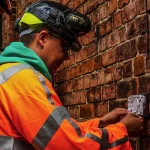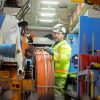The H1 2019 Impact from Full to Capacity FTTC Broadband Cabinets
The latest independent data has predicted that 3.8% of UK premises could be affected by full to capacity FTTC (VDSL2) based “fibre broadband” street cabinets on Openreach’s (BT) network (down from 4.6% in December 2018), which might stop you from ordering a new service.
ISPreview.co.uk first reported on the challenges of “full” street cabinets and their impact upon consumers in 2016 (here), which explained why such cabinets fill up, the problems that it can cause and how long it may take to resolve via upgrades (i.e. anything from a few weeks for a simple line card change to several months, or possibly longer, if additional civil engineering is required).
At present Openreach currently has 88,500 live Fibre-to-the-Cabinet (FTTC) offering street cabinets (DSLAMS) via around 5,300 enabled exchanges, which equates to a UK footprint of about +91%. At any given time a small but variable proportion of these may run out of spare ports for new lines and that can prevent new orders being completed (i.e. waiting list) until extra capacity is added.
Advertisement
Thinkbroadband runs their own independent analysis of this problem, which in April 2018 put the figure at 4.1% and this then increased to 4.6% at the end of 2018 (i.e. it impacted 3,120 out of the 81,409 VDSL2 cabinets tracked in their database at the time), before falling to 3.8% now. A fall here is good news.
The analysis suggests that in ideal circumstances (i.e. no capacity problems) around 90.7% of the UK should be able to order a superfast broadband (30Mbps+) service via Openreach’s network, but this drops by -3.7% points due to full cabinets or -3.8% when looking at any speed on their network.
Standard Coverage Figures (%)
| Region | 30Mbps+ (all tech) | Openreach (any speed) | Openreach 30Mbps+ |
| UK | 95.7 | 93.6 | 90.7 |
| London | 97.1 | 92 | 90.8 |
| Northern Ireland | 88.6 | 97.6 | 86.7 |
| Scotland | 93.5 | 92.8 | 88.8 |
| Wales | 94.7 | 96.4 | 93.2 |
Change Due to Capacity Issues (%)
Advertisement
| Region | 30Mbps+ (all tech) | Openreach (any speed) | Openreach 30Mbps+ |
| UK | -2.1 | -3.8 | -3.7 |
| London | -1.5 | -3.9 | -3.9 |
| Northern Ireland | -1.2 | -1.5 | -1.3 |
| Scotland | -3.0 | -4.4 | -4.3 |
| Wales | -2.9 | -3.5 | -3.4 |
Take note that this data only considers the impact of capacity via Openreach’s national FTTC/VDSL2 network and not that of other platforms. Different networks handle different types of capacity issues in different ways and not all are as transparent about such issues. Likewise newer G.fast and FTTP services on Openreach’s network are not yet a factor above and we don’t imagine port capacity will be an issue for FTTP due to how it’s deployed.
Unfortunately if you happen to live in such a “full to capacity” area then this can cause frustration when attempting to order a new FTTC package or migrating your service, particularly if the ISP accepts the order and begins the switch only to later tell you that they cannot complete it. Some providers can be quite appalling with how they handle these situations, but in other cases the ISP may simply be caught out by a sudden change in status (post-order).
Furthermore there remains a lot of uncertainty over the question of how long consumers will have to wait before the issue is resolved and this is not well communicated by either Openreach or ISPs, which partly reflects the fact that it’s difficult to be accurate with such things.
An Openreach Spokesperson said last year:
“Resolving issues that can cause delay in adding extra customer capacity in our network is a top priority for us and we have made significant progress over the year in reducing average waiting times. We have introduced a number of innovations such as fibre connectivity that uses power from one existing fibre cabinet to power a second cabinet – which has helped reduce the build time taken to commission and build new fibre cabinets by up to 12 weeks.
We’ve also introduced a raft of new measures to help speed up the building of extra capacity into our copper cabinets, such as cabinet top boxes which extend the size of our cabinets creating space for the extra connections required to provide additional fibre capacity.”
We should point out that in some cases Openreach’s may still need to build an entirely new cabinet in order to cater for rising demand, even though they will often manage to avoid this, which can be problematic due to labour / hardware costs, the need to seek planning permission, permits for road access, wayleave agreements, power supply requirements, local objections and so forth.
Advertisement
In addition, local demand is something that can go up as well as down, particularly if a rival network enters the area and thus some of Openreach’s existing lines may become available to new users. Installing more capacity than needed can carry an extra cost and so this is one of the reasons why big operators often prefer to scale as demand grows, rather than cater for 100% of local lines from day one.
Mark is a professional technology writer, IT consultant and computer engineer from Dorset (England), he also founded ISPreview in 1999 and enjoys analysing the latest telecoms and broadband developments. Find me on X (Twitter), Mastodon, Facebook, BlueSky, Threads.net and Linkedin.
« Vodafone Harness Disused BT Phone Boxes to Boost UK 4G Cover

















































Comments are closed